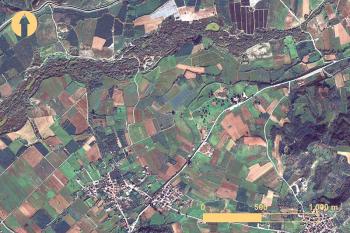American Journal of Archaeology | The Journal of the Archaeological Institute of America
You are here
Evidence for Two Planned Greek Settlements in the Peloponnese from Satellite Remote Sensing
July 2016 (120.3)
Evidence for Two Planned Greek Settlements in the Peloponnese from Satellite Remote Sensing
Satellite remote sensing at Mantinea and Elis in the Peloponnese has identified an extensive network of near-surface orthogonal streets and sections of city blocks. This new and valuable information reveals the general organization of urban space and its parameters, showing that Mantinea and Elis were planned settlements at some point in time. In presenting the evidence for buried archaeological features, the report describes the wider urban layout of each city and outlines a partial reconstruction of an orthogonal network of streets. As Peloponnesian settlements, Mantinea and Elis are considered more broadly within the traditions of Greek town planning. In particular, the report highlights the evidence for planned settlements in the Peloponnese and in doing so challenges the misconception that the region was disinclined to adopt trends in Greek town planning. Finally, an argument is made for the wider integration of satellite remote sensing applications in archaeological fieldwork projects throughout Greece, where until now they were generally lacking.
Evidence for Two Planned Greek Settlements in the Peloponnese from Satellite Remote Sensing
By Jamieson C. Donati and Apostolos Sarris
American Journal of Archaeology Vol. 120, No. 3 (July 2016), pp. 361–398
DOI: 10.3764/aja.120.3.0361
© 2016 Archaeological Institute of America


